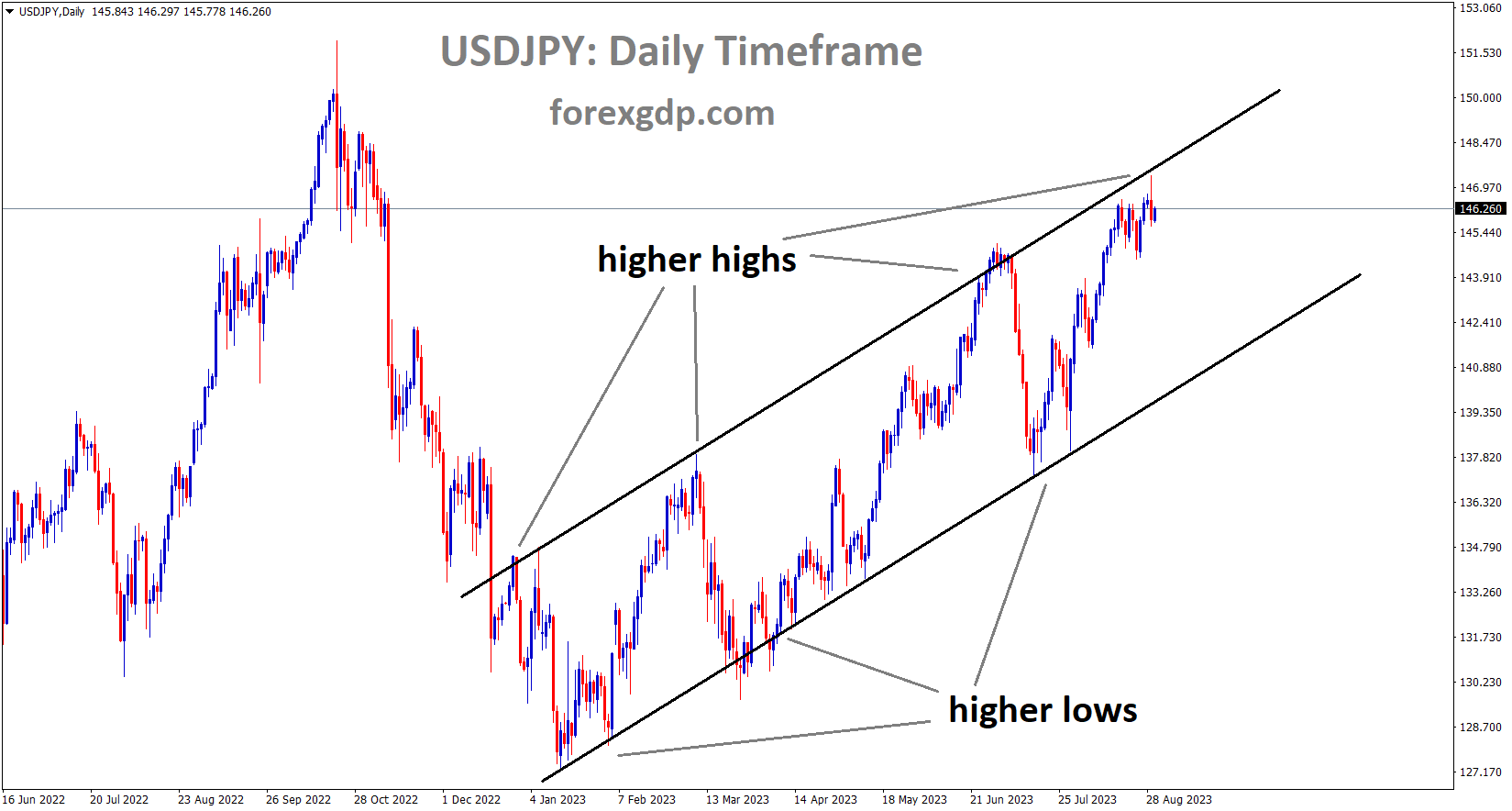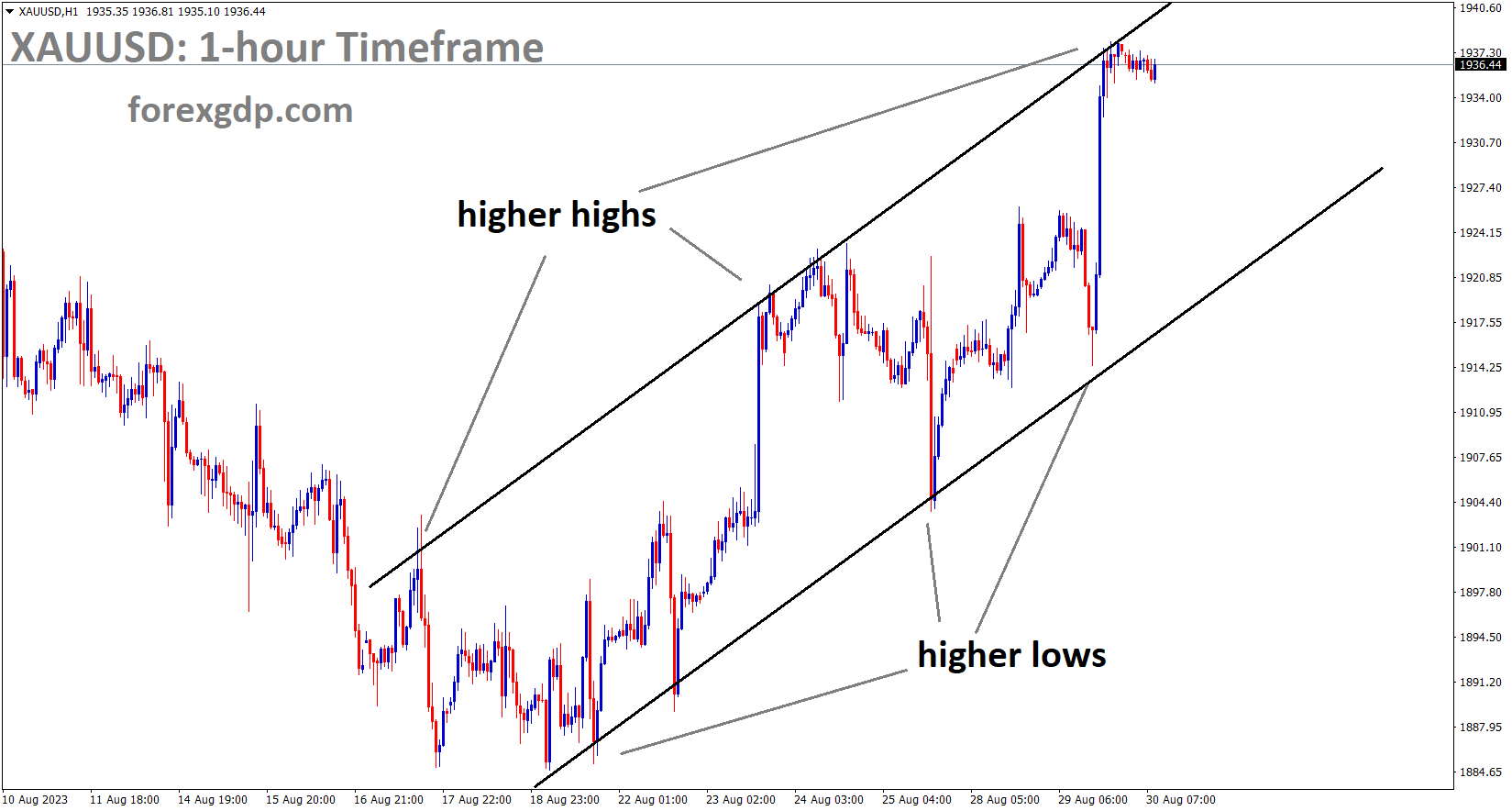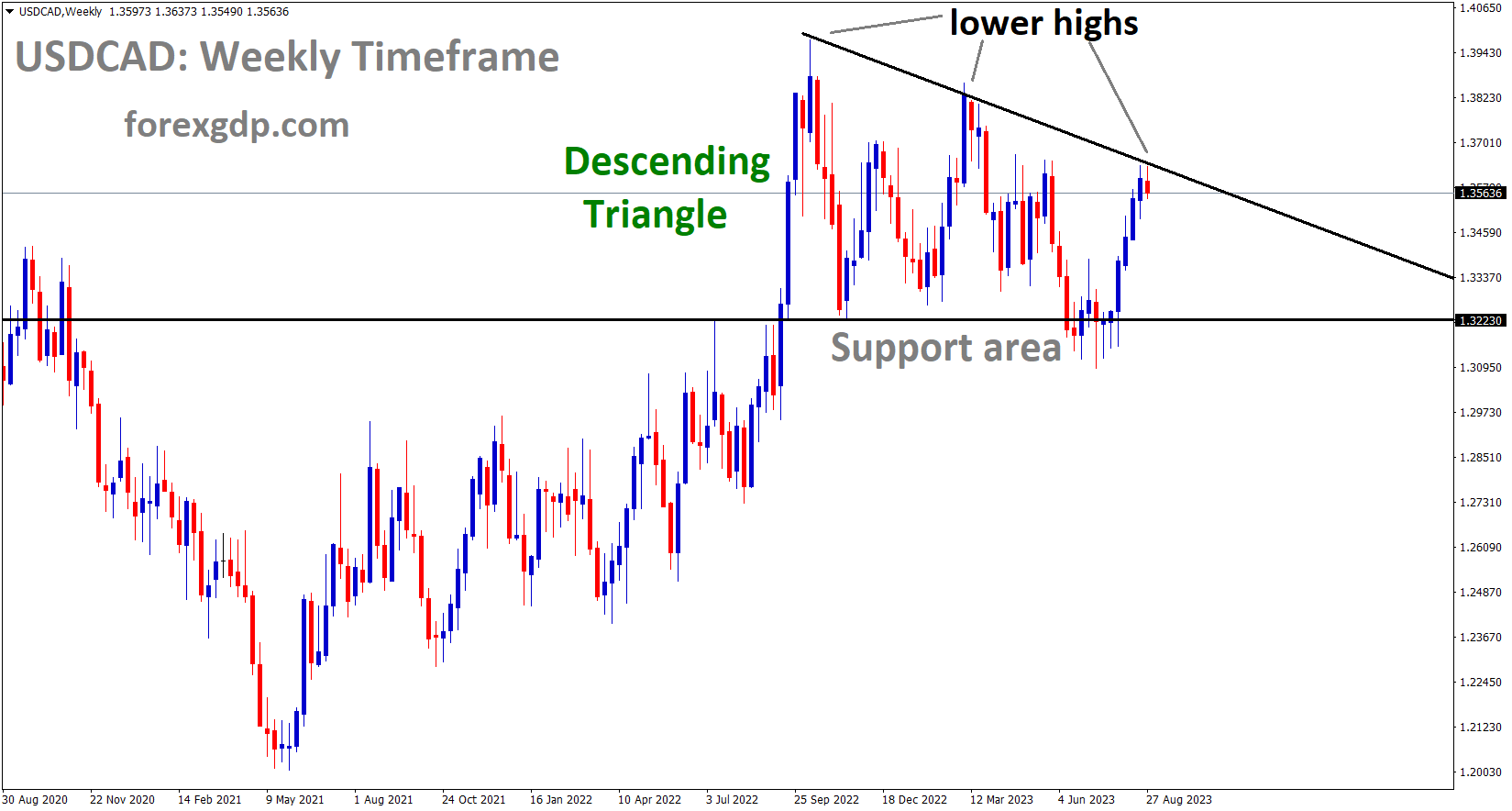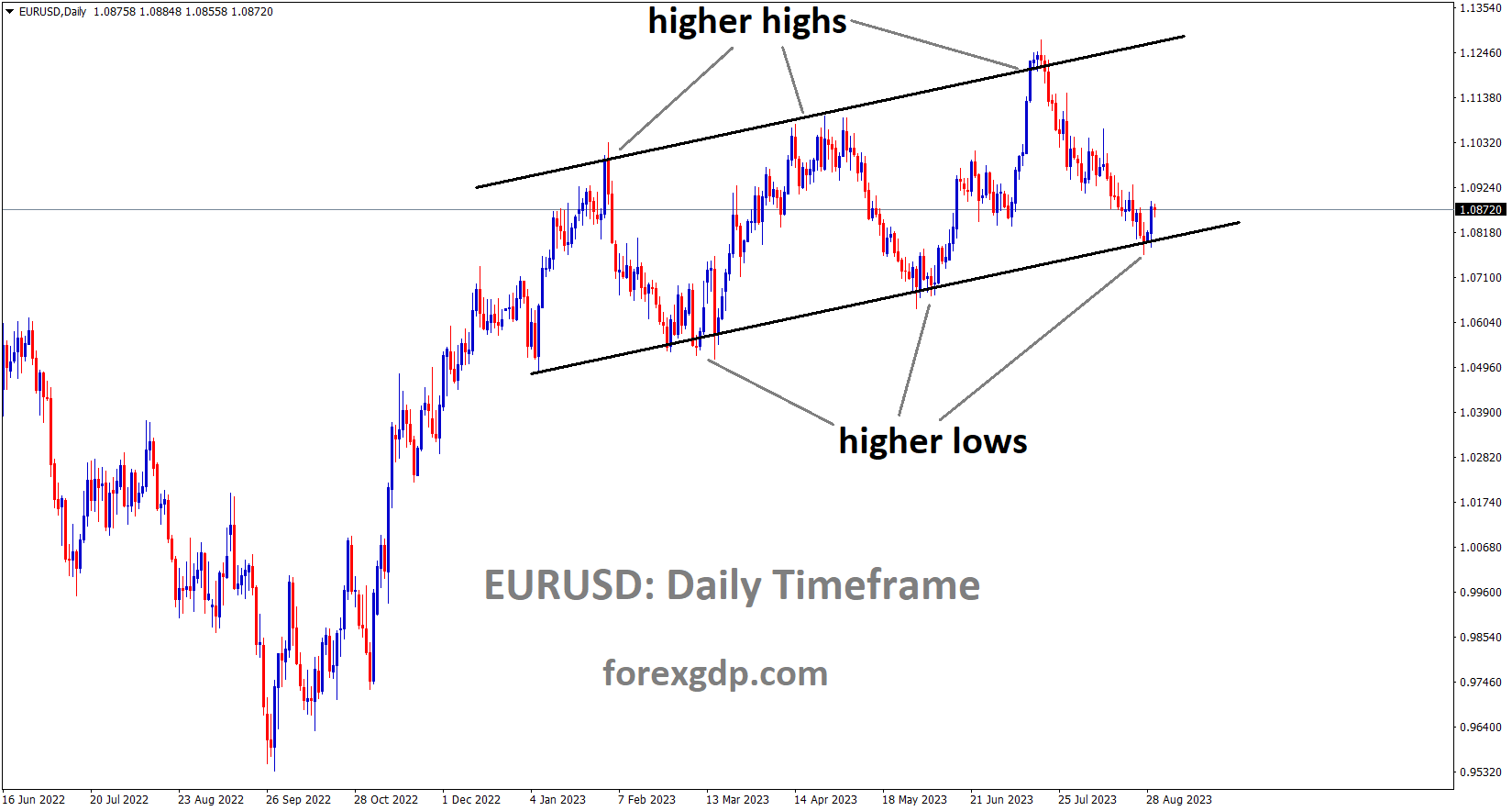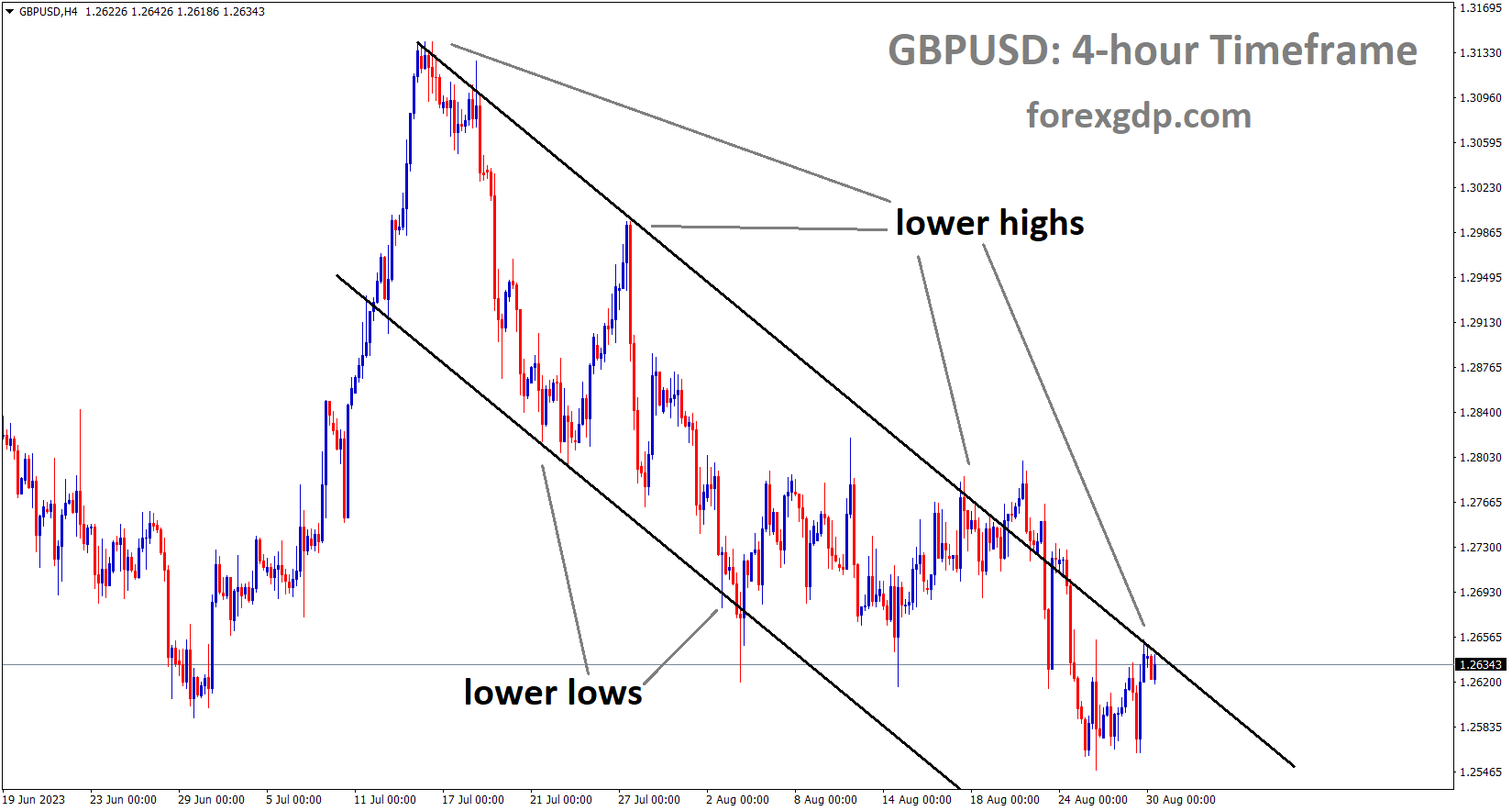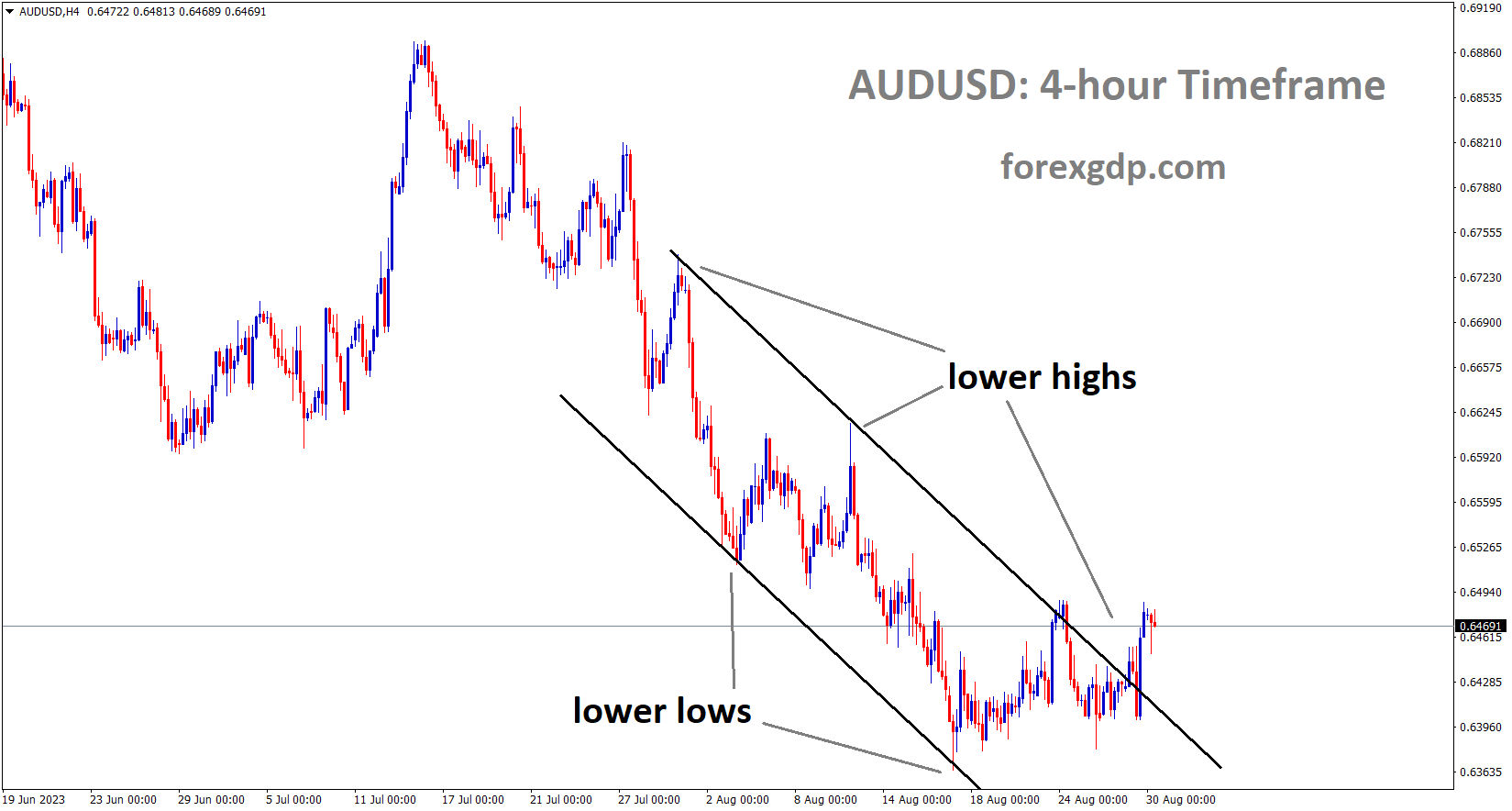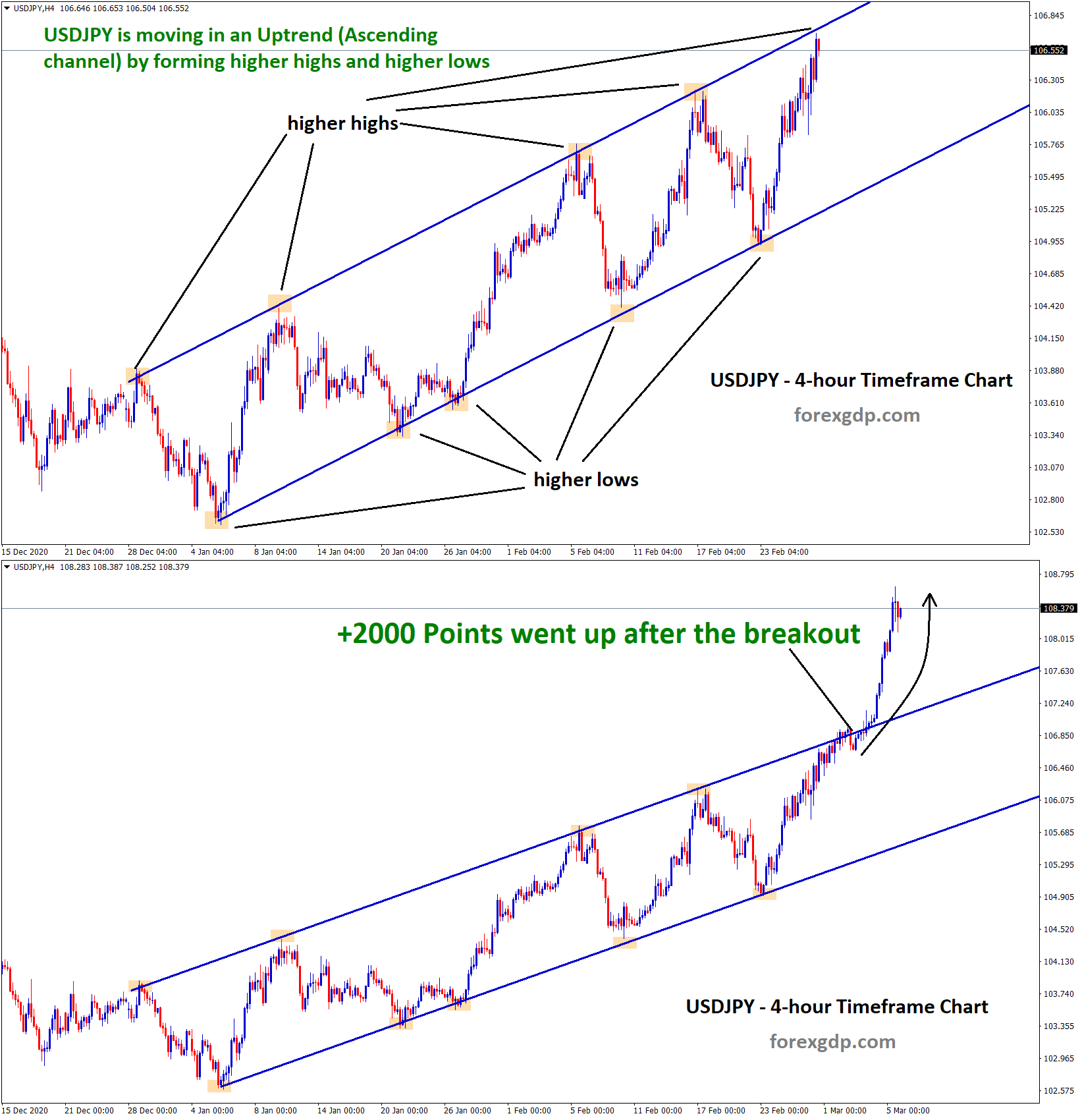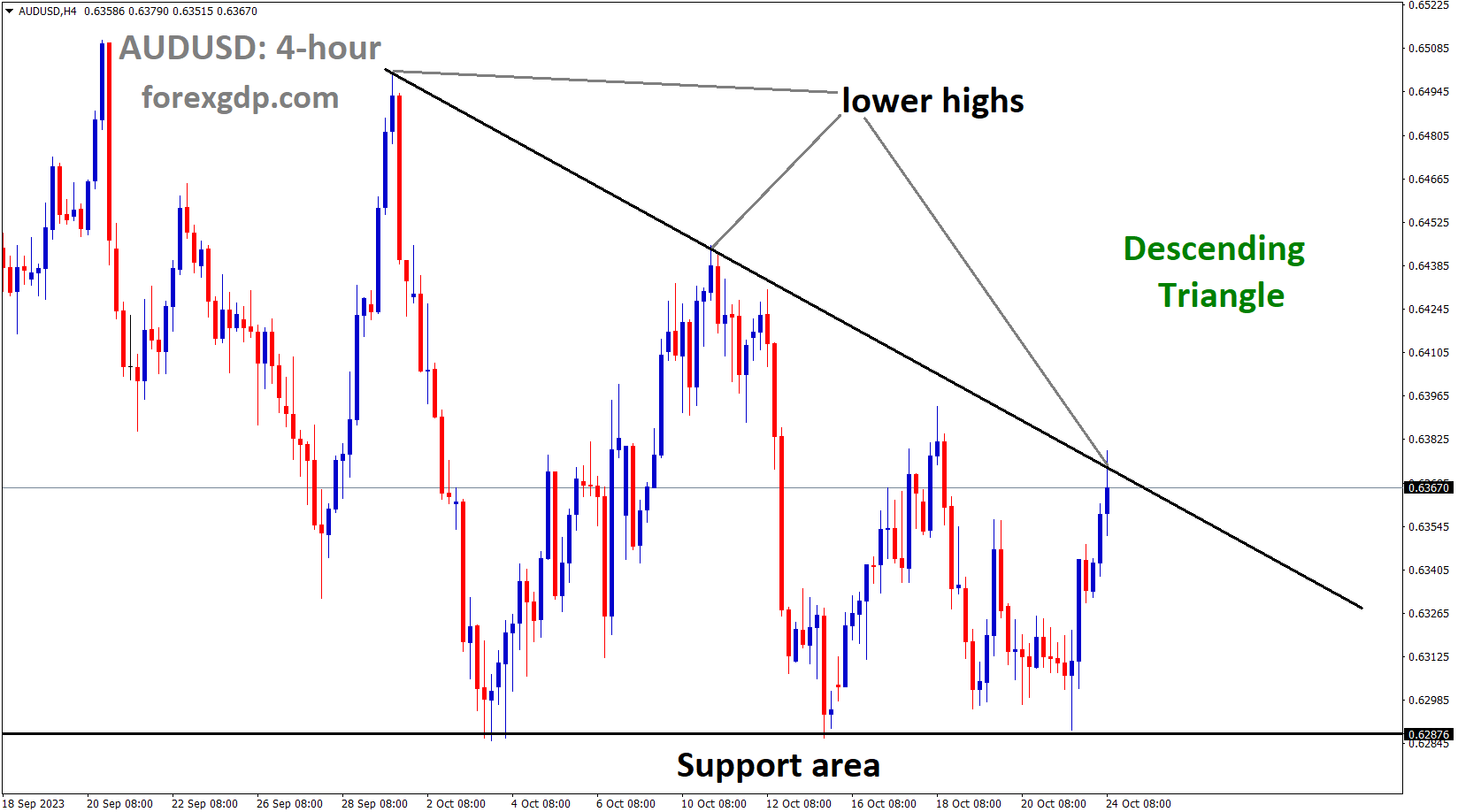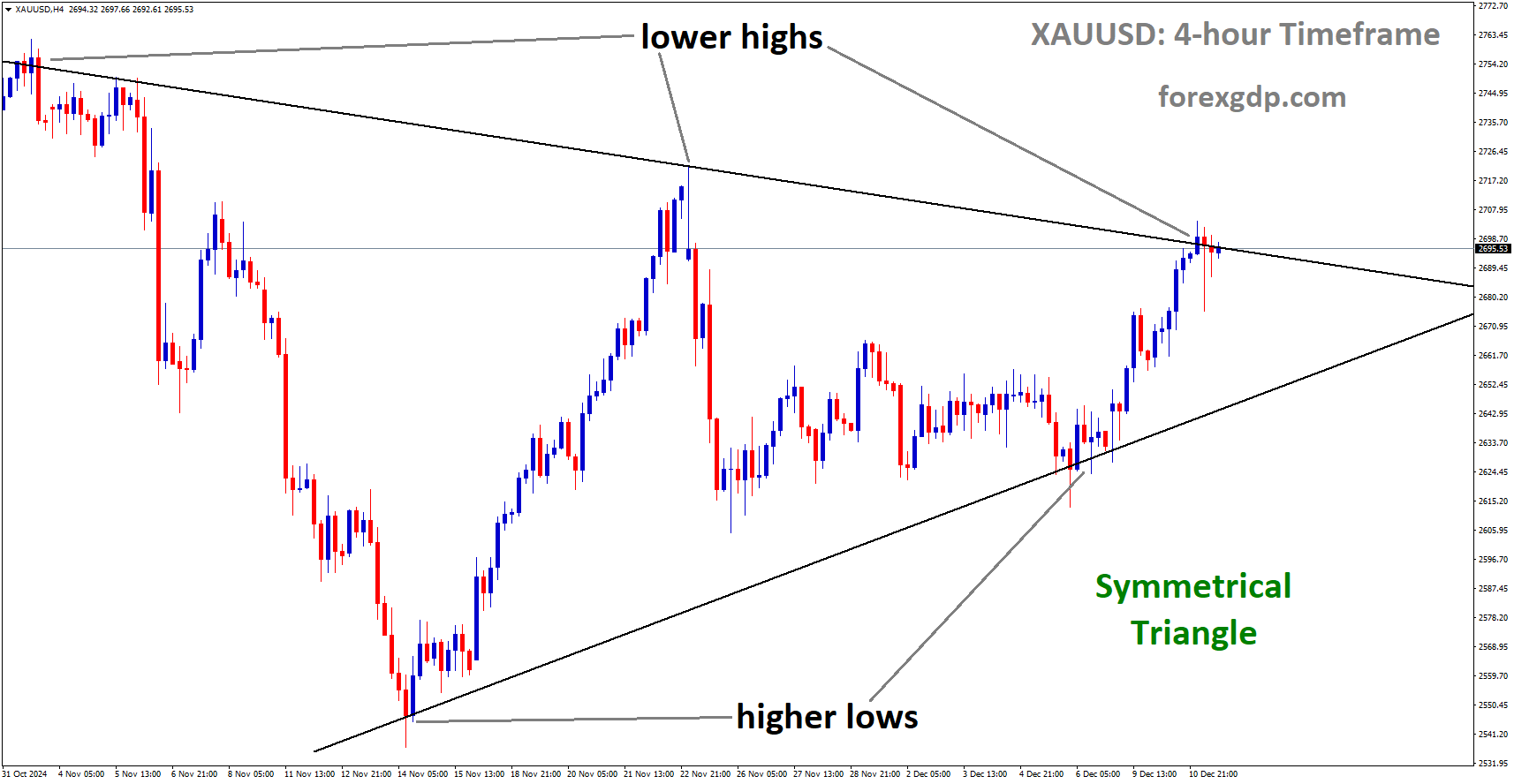USDJPY is moving in an Ascending channel and the market has reached the higher high area of the channel
US Q2 GDP of 2023 is expected higher than previous Quarter due to higher consumer spending, Defence spending, NewHome sales are increasing is welcome support for GDP numbers.
The performance of the US economy in the first half of the year has been impressive, and the momentum seems poised to continue into the third quarter. Various sources, aggregated by CapitalSpectator.com, provide a median estimate that forecasts a 2.5% rise in GDP’s seasonally adjusted annualized change for the July-through-September period. This estimate is slightly higher than the 2.4% increase reported for the second quarter by the government. While these projections are encouraging, there are important considerations to bear in mind as the year progresses.
Factors Influencing Q3 Growth

1) Upbeat Nowcast Based on July Data
The optimistic forecast for Q3 is largely driven by robust economic indicators for the month of July. The data for this period suggests that the resilient US economy extended its growth trajectory through July. However, it’s important to recognize that Q3 encompasses not just July, but also August and September. These latter months remain somewhat uncertain, with limited hard data available to make accurate projections.
2) Sentiment Data and Cautious Expectations
XAUUSD is moving in an Ascending channel and the market has reached the higher high area of the channel
The PMI Composite Output Index, a proxy for GDP, indicated a significant slowdown in US growth for the current month. While PMI data alone may not offer a complete picture of economic activity, it does warrant a note of caution. This information suggests that some of the more optimistic growth estimates for Q3 may need to be tempered until more concrete data for August becomes available.
3) Contrasting Estimates
The Atlanta Federal Reserve’s nowcast for Q3 presents a particularly optimistic perspective, with a projection of a 5.9% increase in GDP. However, this contrasts starkly with the more cautious projection from the median estimate, as indicated by CapitalSpectator.com. As is often the case, focusing exclusively on any single data point can lead to misleading conclusions. Hence, the median nowcast remains a more balanced and reliable indicator.
4) Continued Monitoring and Adjustments
With two months left until the US Bureau of Economic Analysis releases its official Q3 GDP data on October 26, it is essential to maintain a vigilant stance and be prepared for potential revisions. As more comprehensive and accurate data becomes available, any necessary adjustments to the growth estimates will become evident through changes in the median estimate.
Housing Market Resilience Despite Rising Mortgage Rates

1) Surprising Growth in New Home Sales
July saw a remarkable 4.4% increase in new home sales, accompanied by a robust 3.9% rise in housing starts. These positive figures are particularly notable considering the backdrop of rising mortgage rates that have been trending upward since early 2022.
2) Factors Driving the Resilience
Despite the high mortgage rates, new home sales have thrived due to multiple factors. The shift can be attributed in part to existing homeowners being hesitant to relinquish their lower-rate mortgages. Consequently, prospective buyers are turning their attention to new homes, contributing to the resilience in sales and housing starts.
3) Aggressive Pricing and Incentives
USDCAD is moving in the Descending triangle pattern and the market has reached the lower high area of the pattern
Builders have responded to market conditions by adopting aggressive pricing strategies, including mortgage rate buydown incentives. This approach has further bolstered sales, demonstrating the industry’s adaptability to changing economic dynamics.
4) Implications for the Future
The enduring strength of the housing market is a result of the imbalance between demand and supply on a national scale. This dynamic continues to provide support to the housing market, acting as a stabilizing force even in the face of rising mortgage rates.
Retail Sales Surge in July

1) Strong Retail Sales Growth
July saw a 0.7% increase in retail sales, building on the momentum from the previous month’s 0.3% rise. Adjusted for inflation, the growth was even more pronounced. Factors like back-to-school shopping and Amazon’s Prime Day played a significant role, especially in boosting online sales.
2) Driving Factors
The surge in retail sales can be attributed to a combination of factors. While COVID-related savings have been largely spent, consumers continue to spend due to a robust job market and income growth that surpasses inflation.
3) Category-wise Performance
EURUSD is moving in an Ascending channel and the market has rebounded from the higher low area of the channel
Non-store retailers, food and drinking places, sporting goods and hobby stores, clothing and accessory stores, food and beverage stores, general merchandise stores, and building material and garden supply stores experienced growth. On the other hand, furniture stores, electronics and appliance stores, motor vehicles and parts dealers, and miscellaneous stores saw declines in sales.
4) Future Outlook
As long as the job market remains strong and incomes continue to grow steadily, consumers are expected to have the financial means to sustain their spending habits.
The Impact of Entertainment Industry on Economic Growth
1) Contribution from Entertainment Industry
The entertainment industry, particularly high-profile concert tours and blockbuster movies, is making a substantial contribution to the US economy. Concert tours by artists like Taylor Swift and Beyoncé, along with the movies ‘Barbie’ and ‘Oppenheimer,’ are projected to add a staggering $8.5 billion to the US output in Q3.
2) Concert Tours and Movie Phenomenon
GBPUSD is moving in the Descending channel and the market has reached the lower high area of the channel
Taylor Swift’s successful ‘Eras Tour’ and the ‘Barbenheimer’ movie phenomenon are playing a pivotal role in this economic boost. Swift’s concerts have not only generated significant revenue but also boosted hotel revenues and staff bonuses. Similarly, the success of the movies has revitalized the struggling movie theater industry and increased consumer spending on entertainment.
3) Short-term Nature of the Boost
While the current entertainment industry boost is impressive, it’s important to recognize that these gains may be temporary. The absence of concerts by Beyoncé and Taylor Swift in the final quarter of the year, coupled with the unique nature of the ‘Barbenheimer’ success, suggests that this economic surge might be short-lived.
Federal Reserve’s Economic Policy and Rate Hikes
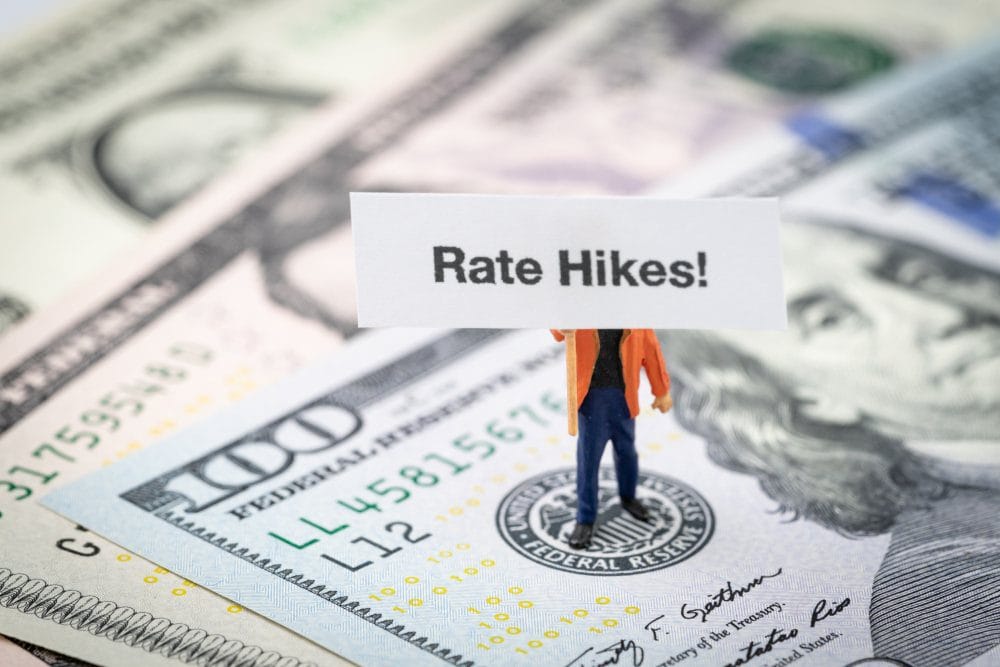
1) Powell’s Views on Inflation and Interest Rates
Federal Reserve Chair Jerome Powell addressed the need for potential further interest rate hikes to combat inflation sustainably. He noted the need to cool the economy down and indicated that the current stance of policy is considered restrictive, putting downward pressure on economic activity, hiring, and inflation.
2) Labor Market Dynamics and Monetary Policy
AUDUSD is moving in the Descending channel and the market has reached the lower high area of the channel
Powell emphasized the incomplete rebalancing of the labor market, indicating that further progress in this area is essential for achieving price stability. He reiterated the Fed’s commitment to achieving and sustaining a stance of monetary policy that will bring inflation down to the 2% target over time.
3) Uncertainty and Prudent Policy
While acknowledging signs of economic growth and job market improvements, Powell also highlighted the uncertainty in determining the precise level of monetary policy restraint. He stressed the importance of maintaining a vigilant stance and the possibility of taking further action, such as additional rate hikes, to address any signs of a stall or reversal in progress.
As the US economy progresses through the third quarter of 2023, it remains on a trajectory of growth, supported by a range of positive indicators. However, it’s essential to approach these projections with a balanced perspective, considering the potential impact of various economic variables. The interplay between inflation, labor market dynamics, interest rates, and the entertainment industry will all play a crucial role in shaping the economic landscape for the rest of the year. Staying attuned to emerging data, making prudent policy adjustments, and maintaining a vigilant stance will be pivotal in navigating the uncertainties and ensuring continued economic growth.
Don’t trade all the time, trade forex only at the confirmed trade setups.
Get Live Free Signals now: forexgdp.com/forex-signals/

